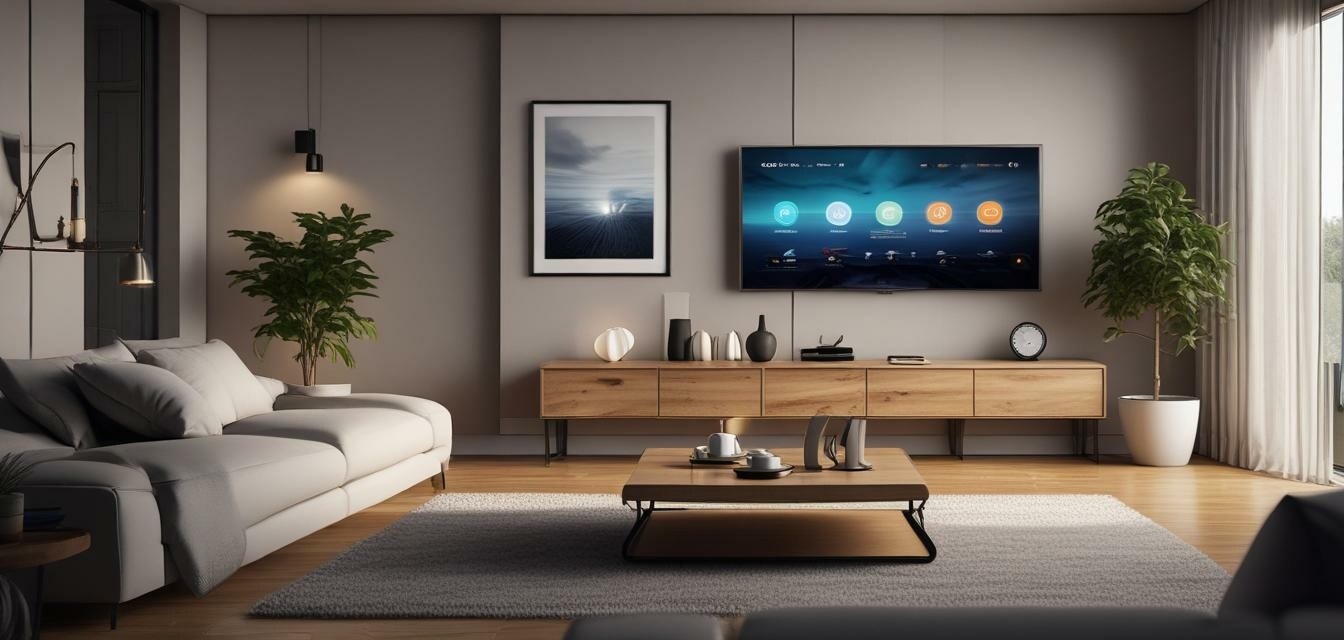
Home automation basics: Getting started in 2025
Key Takeaways
- Home automation enhances convenience and security.
- Understanding the basics is crucial for effective implementation.
- Investing in compatible devices is key to a seamless setup.
- Consider your individual needs and lifestyle when choosing gadgets.
- Explore the potential savings from energy-efficient devices.
As we step into 2025, the landscape of home automation continues to evolve, presenting exciting opportunities for those looking to simplify their lives. Home automation refers to the integration of smart technology into home settings, allowing homeowners to control various functions through their devices or voice commands. In this guide, we will explore the basics of home automation and the first steps you can take to implement smart technologies in your space.
Understanding Home Automation
Home automation can enhance the convenience and security of your living space by automating daily tasks. Devices such as smart thermostats, lighting, and security systems all play a role in transforming traditional homes into smart homes. Let's break down the core components:
| Home Automation Component | Description |
|---|---|
| Smart Lighting | Control lighting remotely via your smartphone or voice, customize lighting scenes, and set schedules. |
| Smart Thermostats | Optimize energy efficiency by learning your schedule and adjusting heating and cooling automatically. |
| Smart Security Systems | Enhance home security with cameras, alarms, and smart locks that can be monitored from anywhere. |
| Voice-Controlled Assistants | Use voice commands to control various smart devices and automate tasks. |
Getting Started with Home Automation
Now that you have a foundational understanding of home automation, here are some practical steps to get started:
1. Assess Your Needs
Before purchasing any devices, consider your lifestyle and what benefits you want from home automation. Do you want to improve security, enhance energy efficiency, or make your home more convenient? Your answers will help guide your choices.
2. Choose Compatible Devices
It’s essential to select devices that work well together to establish a cohesive smart home ecosystem. Here are popular device categories to consider:
- Smart Lighting: Look for bulbs that can connect to your home Wi-Fi or hub.
- Smart Thermostats: Choose models that are compatible with your HVAC system.
- Security Cameras: Ensure the cameras support seamless connectivity with your network.
3. Set Up Your Network
Reliable Wi-Fi is critical for any home automation system. Ensure that your network can handle multiple devices and has strong coverage in all areas of your home. Consider investing in a mesh Wi-Fi system if needed.
4. Begin with a Hub
A smart home hub centralizes control of your devices, making it easier to manage your entire system. Choose a hub that supports your selected devices and offers user-friendly apps. Popular hubs include:
| Smart Hub | Compatibility | Key Features |
|---|---|---|
| Amazon Echo | Compatible with Alexa-enabled devices | Voice control, music playback |
| Google Nest Hub | Works with Google Assistant | Smart display, voice commands |
| SmartThings Hub | Compatible with multiple brands | Automation routines, device management |
5. Automate Your Routine
Once your devices are set up, start creating routines to automate your daily tasks. You could set your lights to turn on at sunset, schedule your thermostat to adjust temperatures when you’re home or away, or create security alerts when you leave the house.
Exploring Smart Home Features
There are several innovative features available in smart home technology that can make your life easier:
- Energy Monitoring: Smart plugs and energy monitors track energy usage for various devices.
- Home Surveillance: Integrate security systems with real-time video feeds accessible via your smartphone.
- Voice Control: Use voice commands to control devices without lifting a finger.
- Integration with Other Smart Devices: Connect devices for seamless operation, like having your thermostat adjust based on temperature readings from a smart sensor.
Conclusion
Home automation is not just about convenience; it's about creating a comfortable and efficient living space. By understanding the basics and taking small steps towards implementation, you can transform your home into a smart home that suits your lifestyle. Whether you decide to focus on security, energy efficiency, or overall convenience, the world of home automation awaits with endless possibilities.
For more information on how to enhance your home with smart decor gadgets, explore our Smart home decor tips and ideas or check out our latest trends and innovations in the smart home space.
Pros
- Enhances convenience and efficiency.
- Improves home security.
- Saves energy and reduces costs.
- Offers customization to fit lifestyle needs.
Cons
- Initial setup costs can be high.
- Compatibility issues among devices.
- Dependency on stable internet connection.
Ready to dive into the world of home automation? Start exploring the potential of smart gadgets today and elevate your living experience!